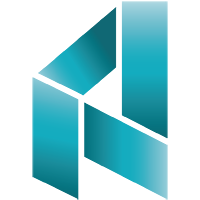The size of the air purifier market was about $11,423 million in the year 2021, and it will advance at a rate of about 12% by the end of this decade to reach about $31,196 million in 2030. The advance of the market is because of the rising air pollution levels worldwide, worsening indoor air quality, the snowballing pervasiveness of airborne illnesses, and health apprehensions, accompanied by the improving living standard and rising income of people.
Air purifiers that have HEPA and ionic technologies have above 50% of sales, with those based on the HEPA technology. HEPA air purifiers include HEPA filters with multi-layered meshes of fine fiberglass threads. These filters are blitzed with high-speed air, which dries out any virus. They capture the smallest floating particles in indoor air, therefore helping fight asthma and averting allergies and other breathing ailments. In fact, these filters can capture the COVID-19 virus, which is about 0.125 microns in size.
Moreover, carbon air filters are largely used to eliminate gases with the aid of a bed of activated carbon. They are typically utilized to eliminate the VOCs released from common household products and whiffs from the air, for example, the smell of tobacco. Therefore, activated carbon technology ranks third in the overall demand.
The APAC industry is around 40% of the global revenue, because of the increasing population, rapid development and mechanization, accompanied by the snowballing income of people. Furthermore, India, Pakistan, and Bangladesh are amongst the nations with the worst air quality, exceeding the WHO limits by a minimum of ten times, according to the IQAir report. Furthermore, even though the People’s Republic air pollution levels decreased in 2021, the nation still has significantly polluted air, which increases health worries among people.
The demand for residential air purifiers had approximately 20% of the air purifier market in 2021, and they will witness the highest rate in the near future. The demand for residential purifiers is credited to the increasing consciousness amongst individuals about their health, because of the anxieties arising because of the polluted air, and the rising smart home popularity around the world.
The HEPA technology is the most extensively acknowledged by residential air purifier users because of its high dependability and performance. In March 2022, Forbes registered the 10 best air purifiers for homes that had Levoit LV-H132 with HEPA filter as ‘Best Air Purifier, while Dyson HP01 Pure Hot + Cool was branded as ‘Best Multi-Use Air Purifier.
Recently, major market players have been launching products with novel technology and features, along with upgrading the present product portfolios and increasing their topographical operations, to stay competitive. For example, LG Electronics in February 2022 proclaimed the launch of the enhanced PuriCare Wearable Air Purifier in Qatar.
It is equipped with a completely automatic fan air flow control system, which upsurges breathing comfort and integrates a couple of H13 HEPA filters.
With the deteriorating air quality and improved living standards, the demand for air purifiers is constantly on the rise.



 COMMENT
COMMENT FACBOOK
FACBOOK



Comments (0)